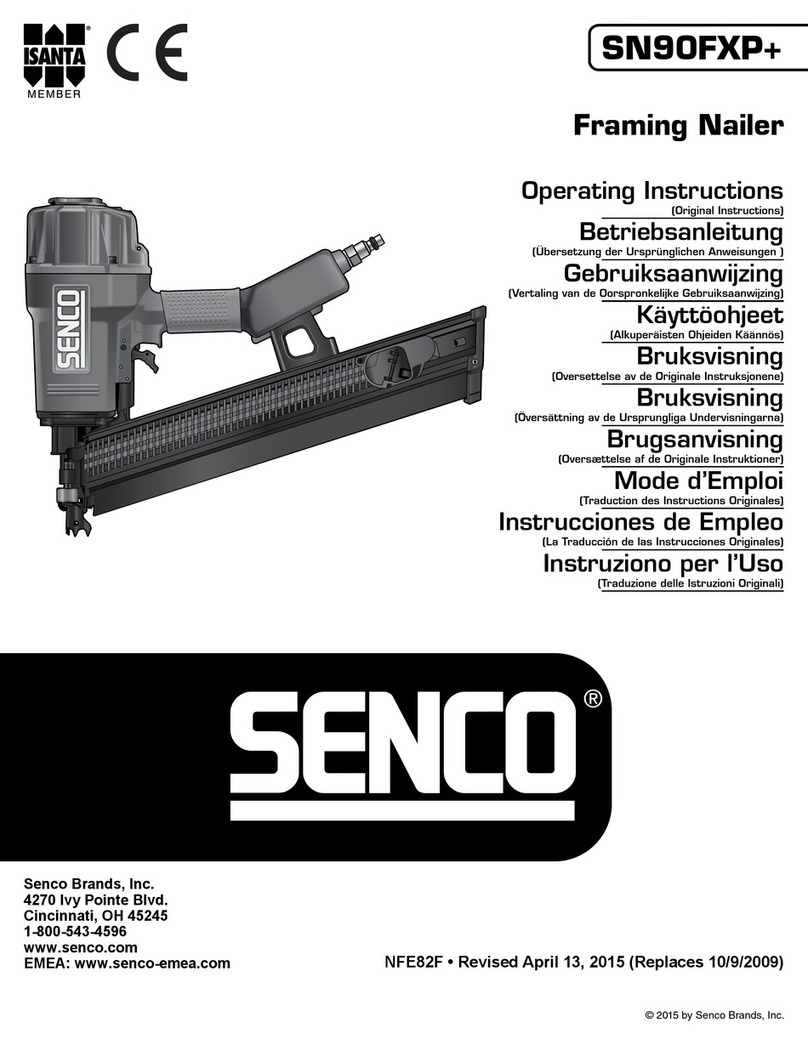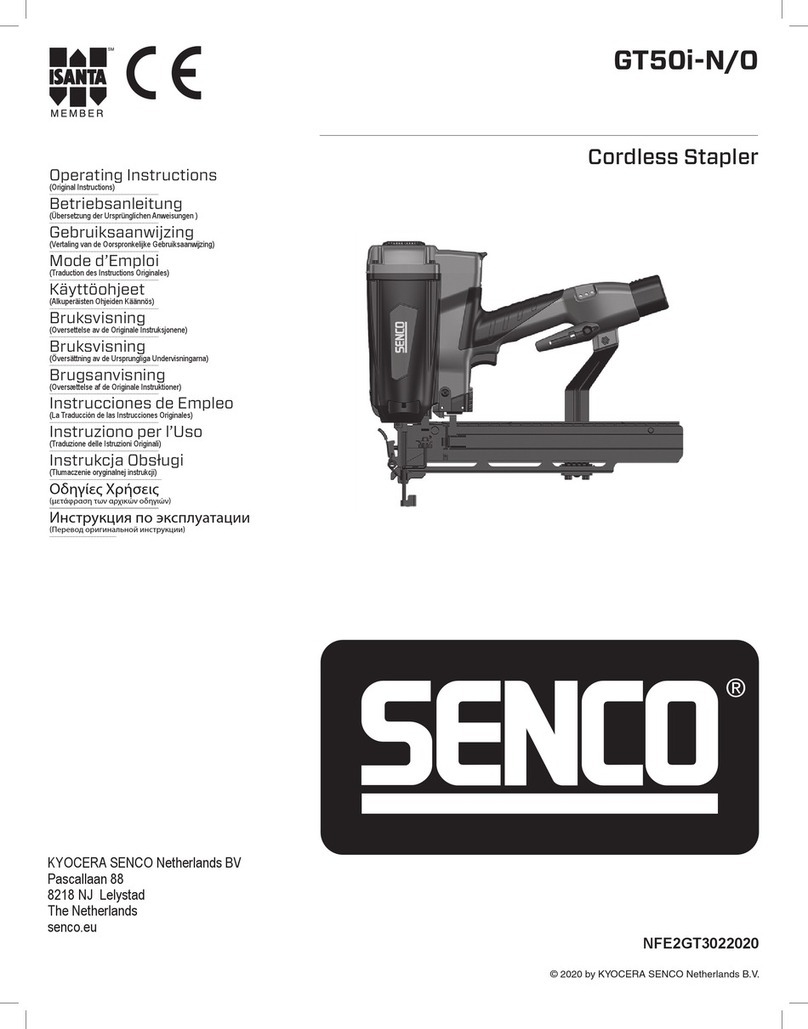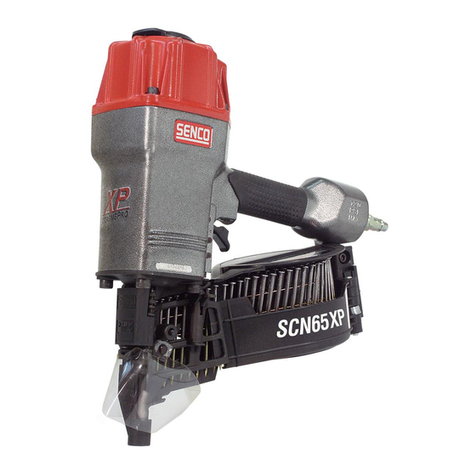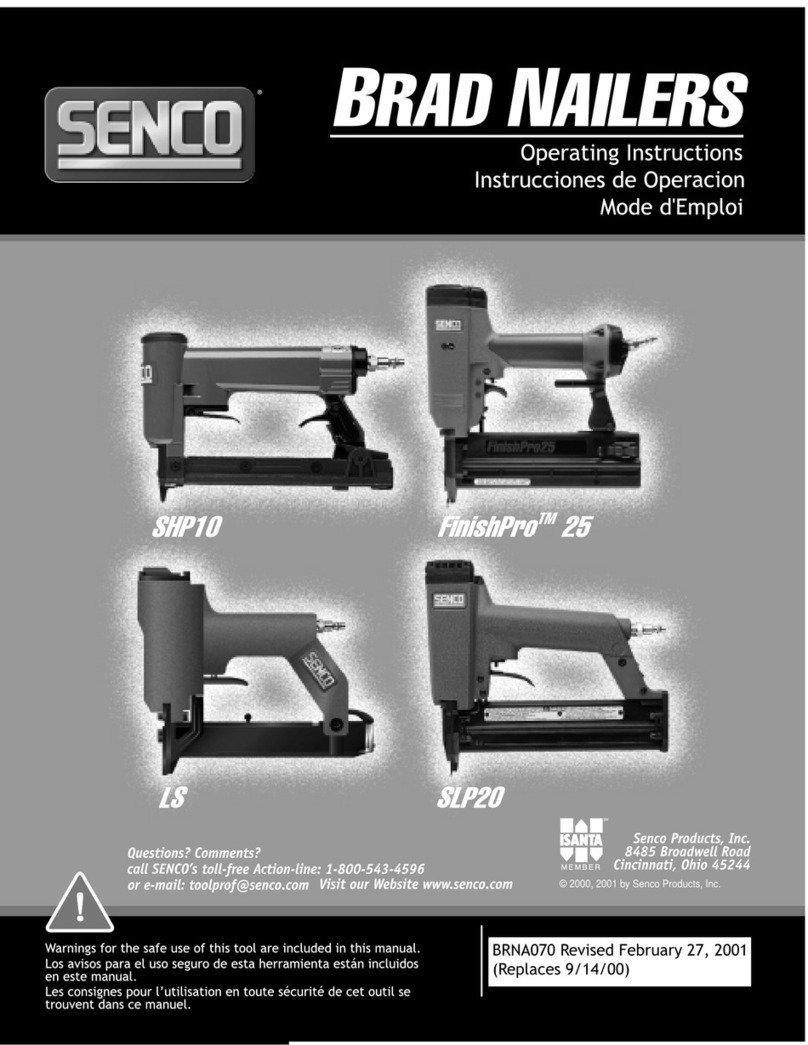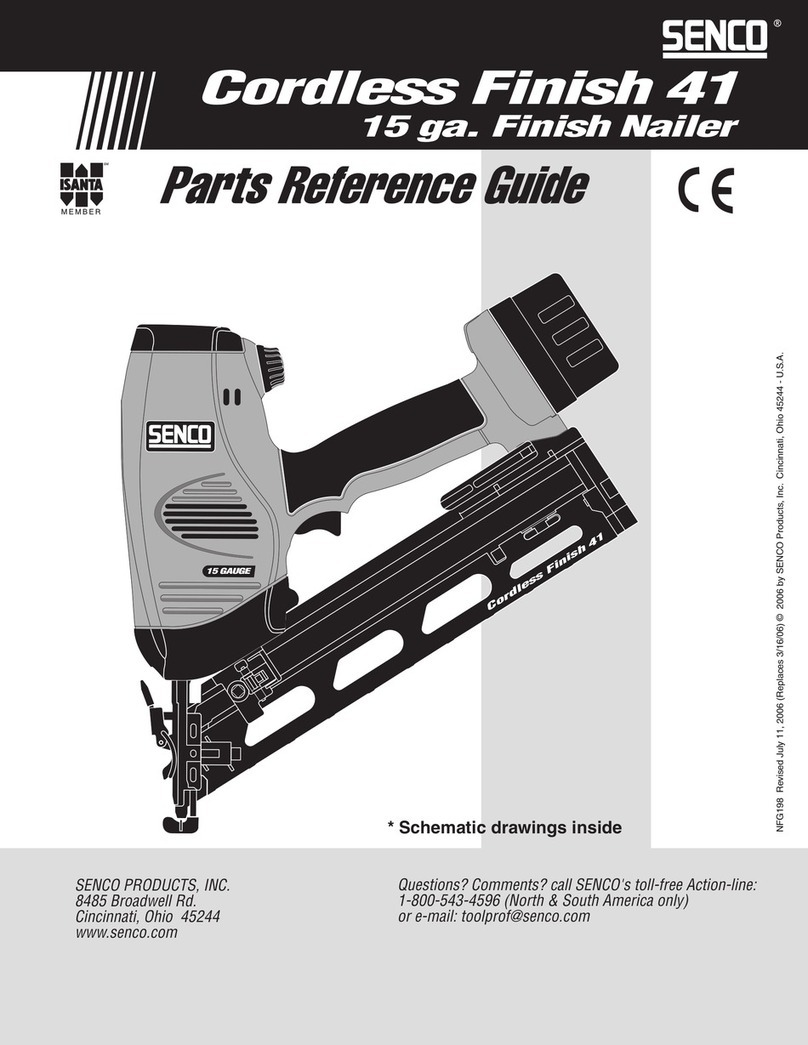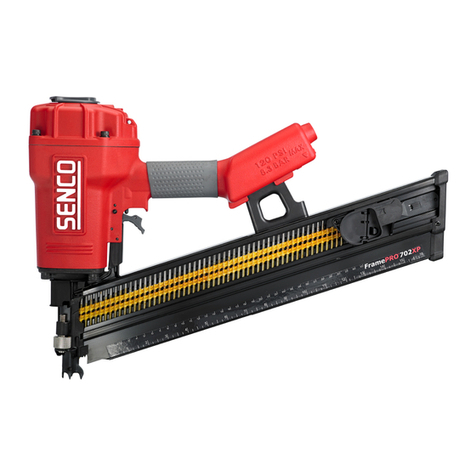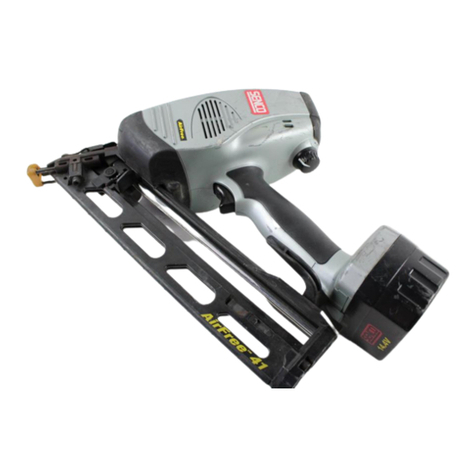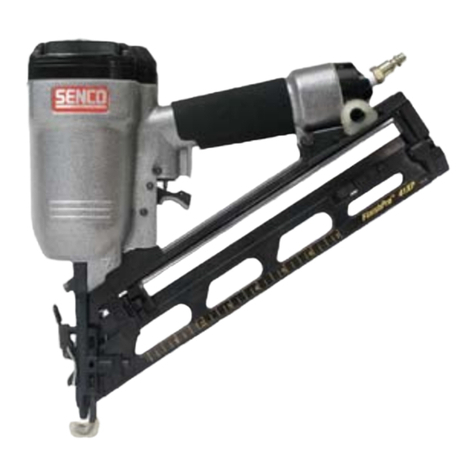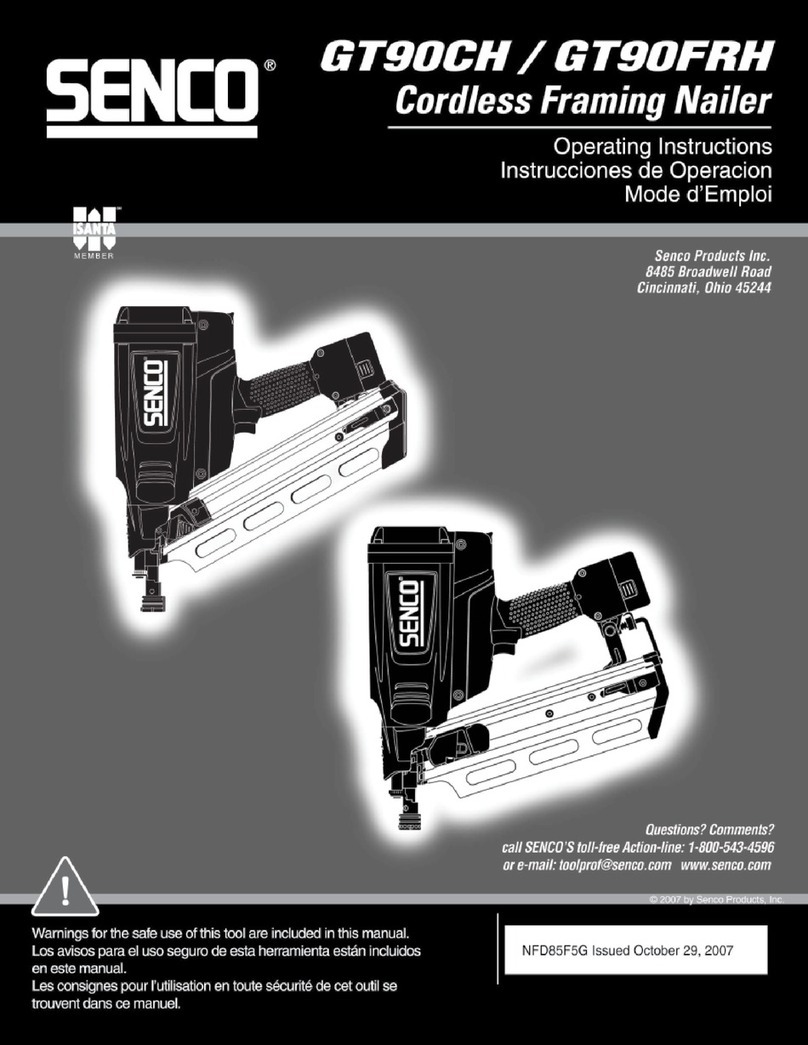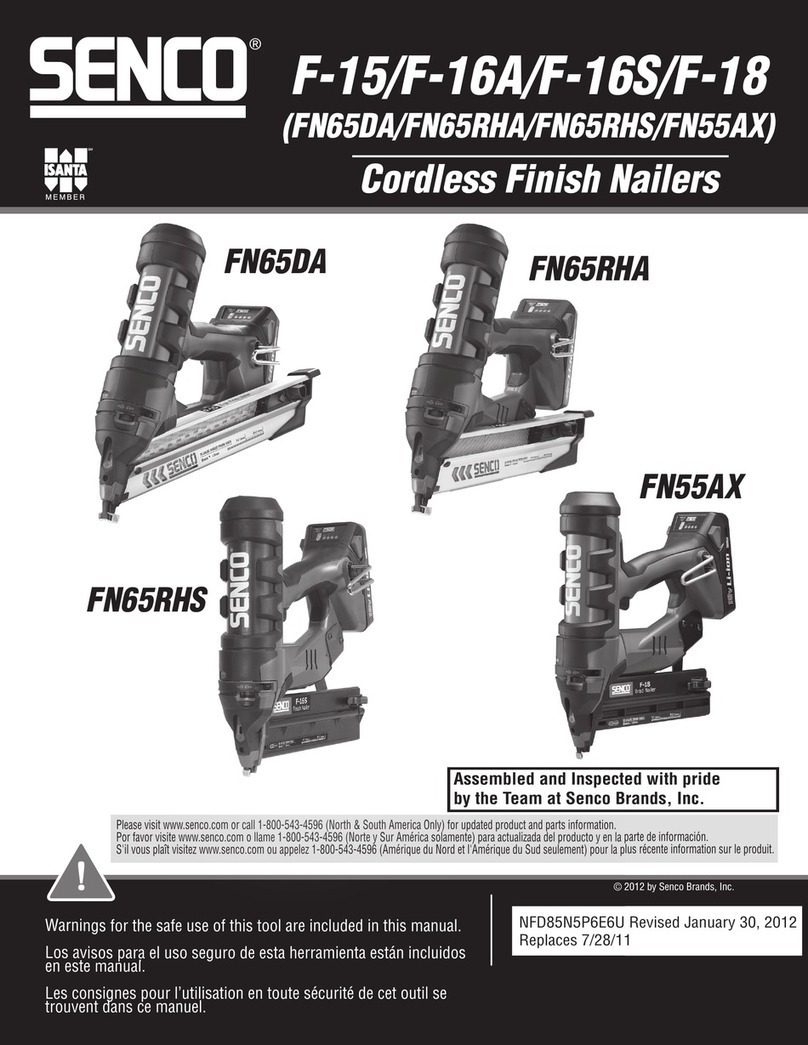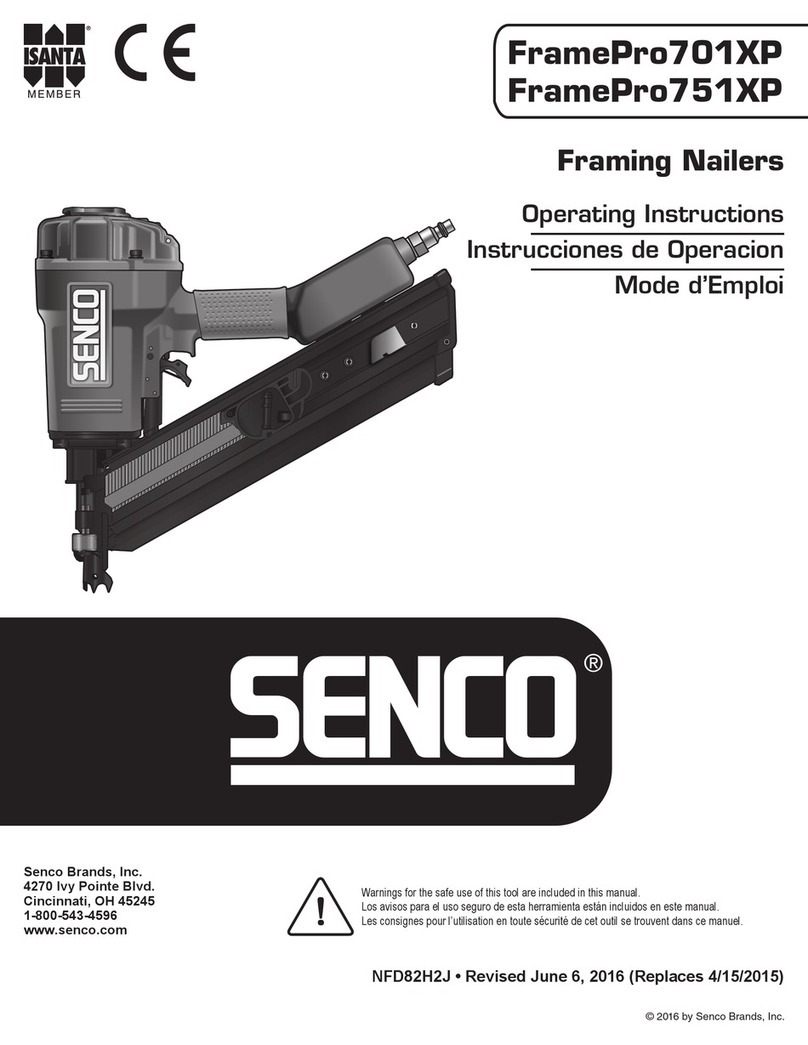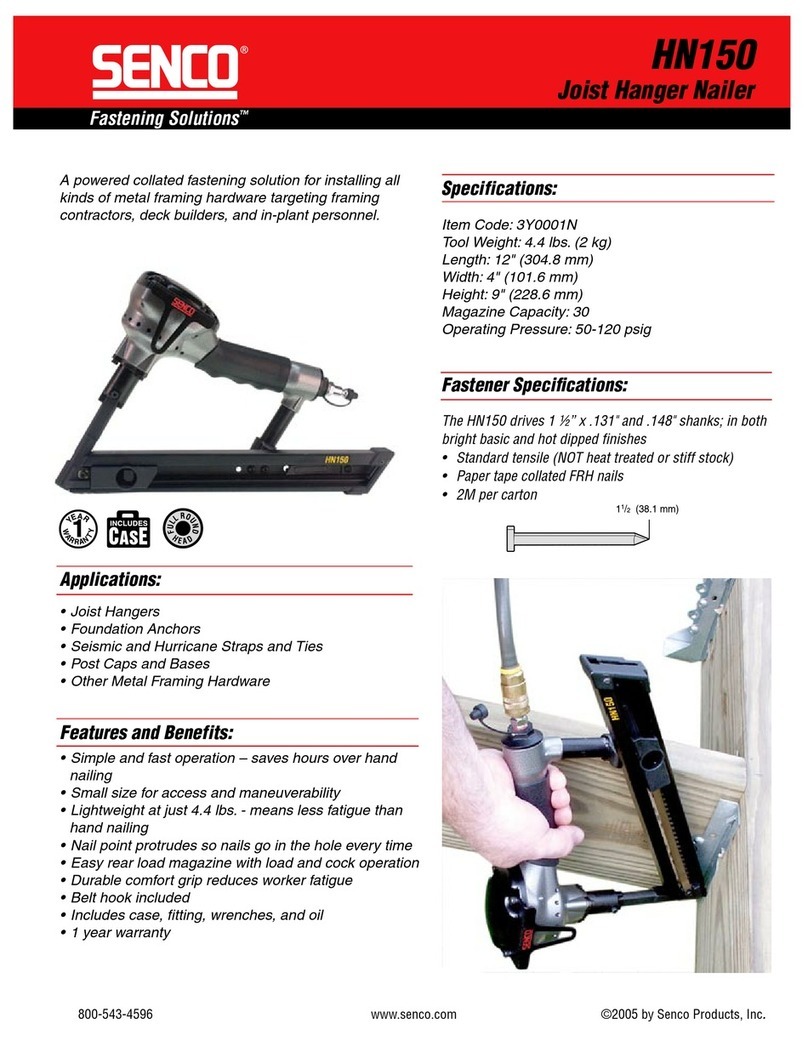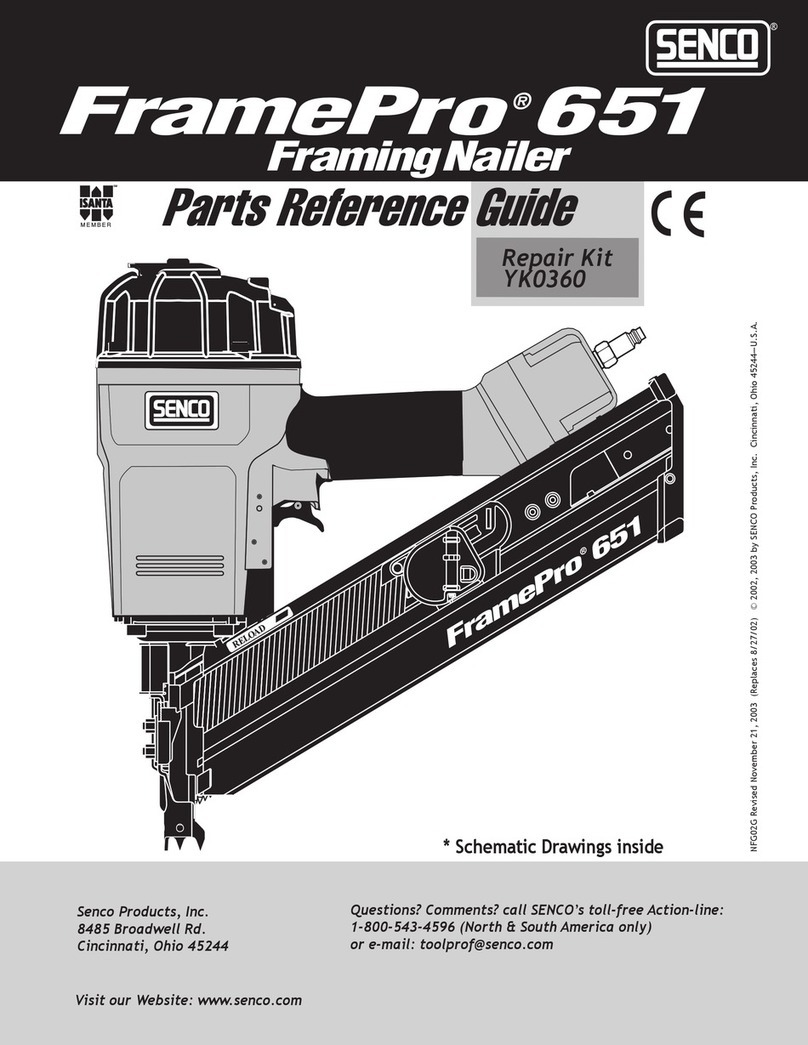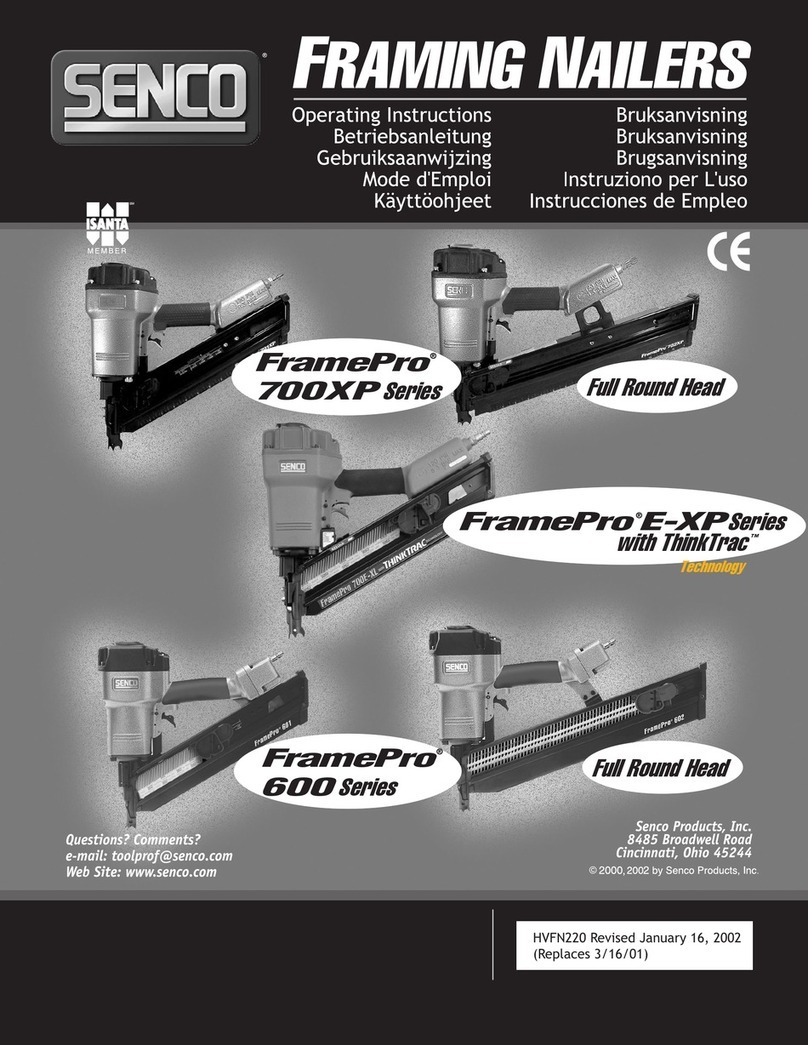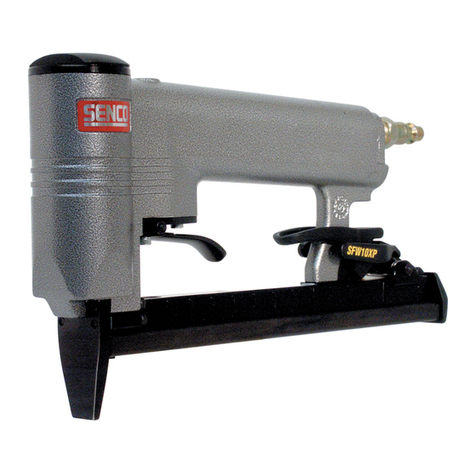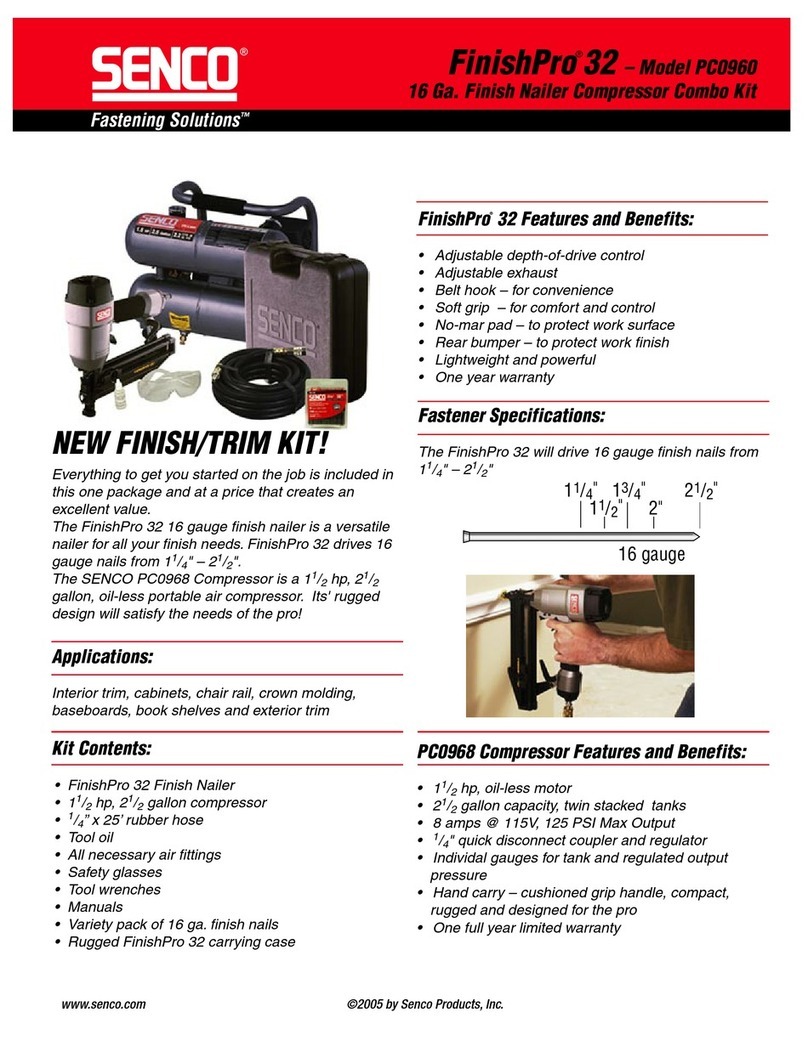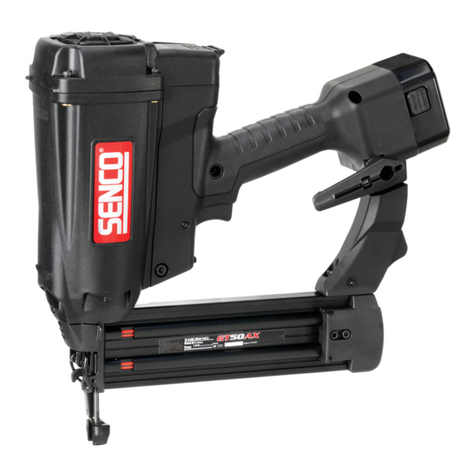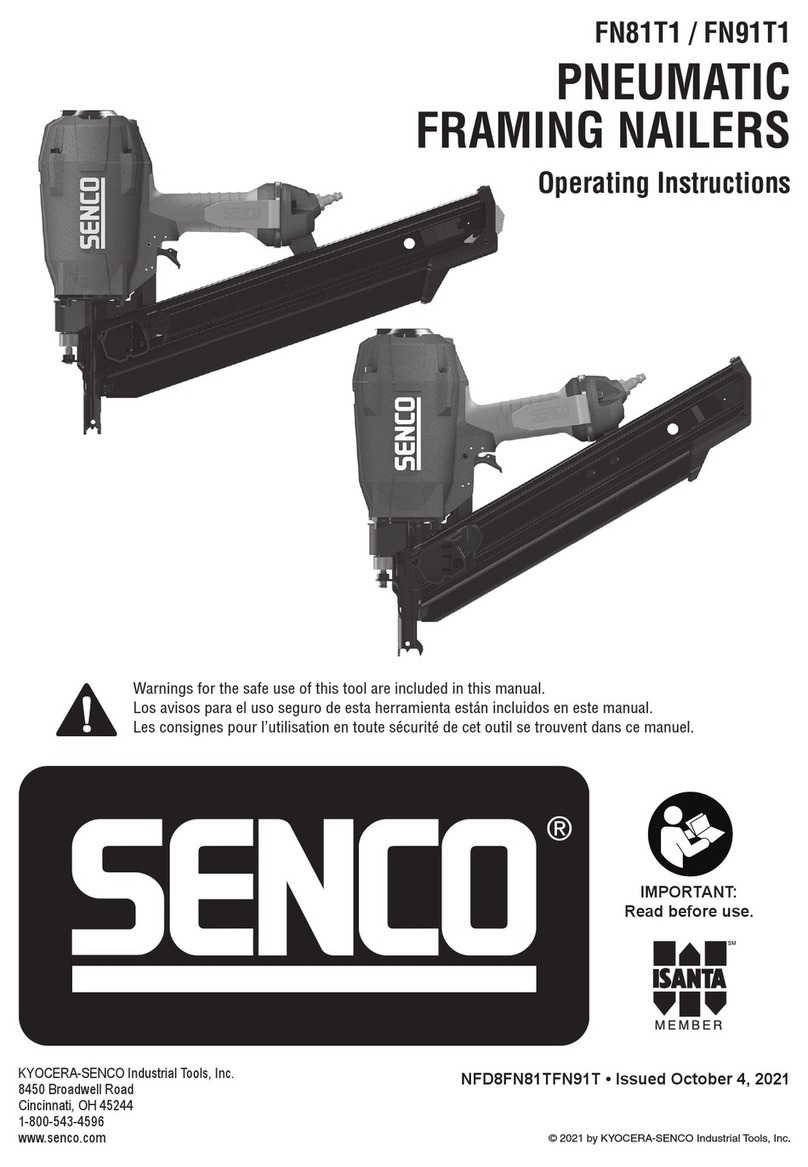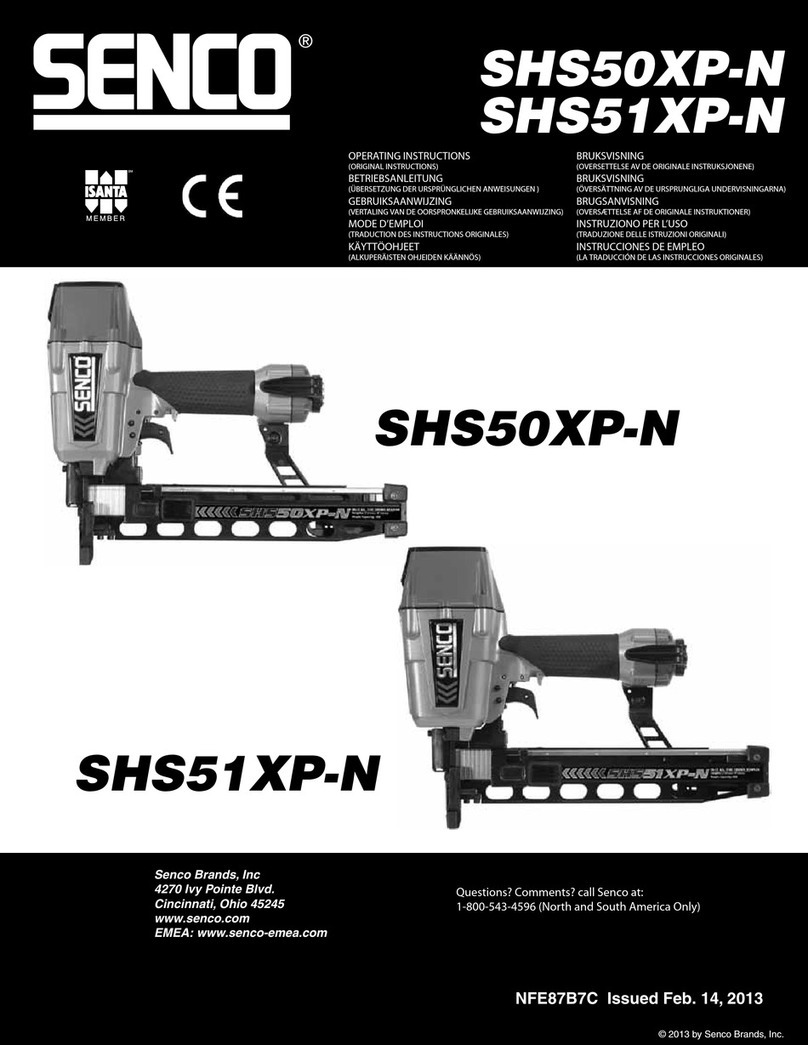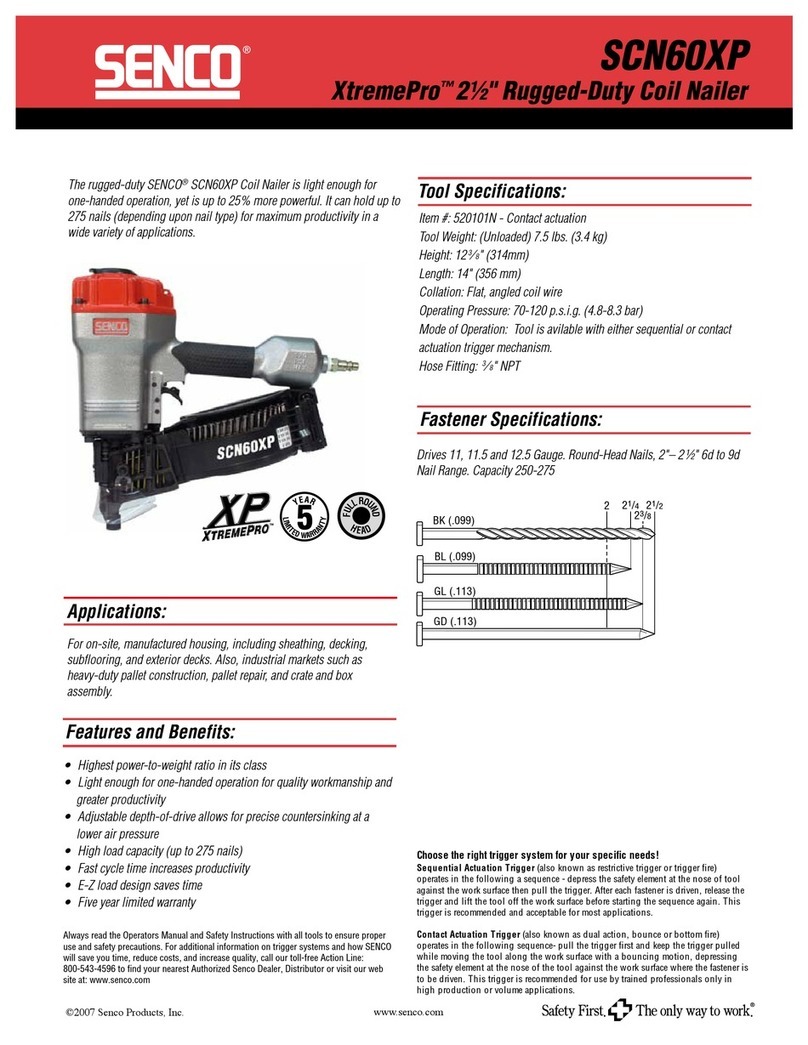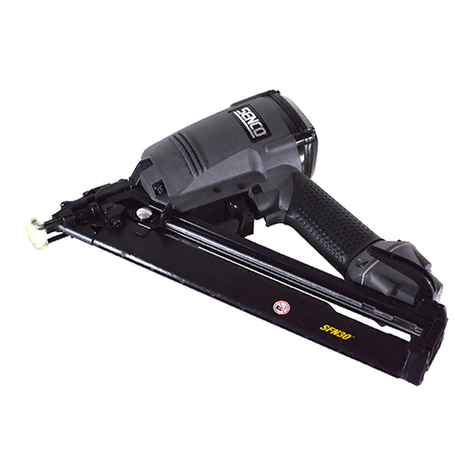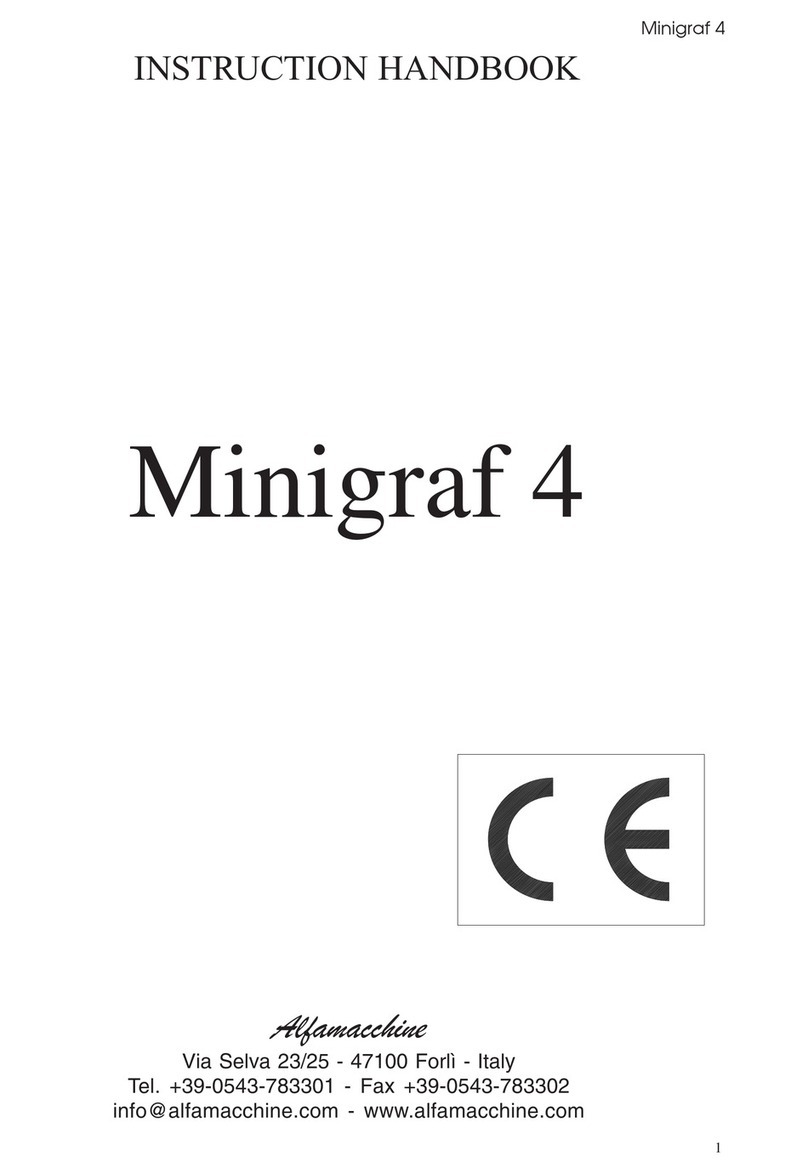CONNECTING THE TOOL TO AN AIR SUPPLY
1. Determine if the tool needs oil and, if necessary, place two drops of oil in
the AIR PLUG(71) as shown in Figure 2. If you are using an automatic in-line
oiler, check and add oil if necessary.
2. Turn the compressor on and set the regulator to the proper pressure for the
size and type of fastener being used.
3. Connect the tool to the air supply (see Setup for air supply connection
recommendations).
Figure 2
Figure 3
LOADING THE FASTENERS
1. Depress the LOCK(58) to release the MOVABLE MAGAZINE (51)
and pull the magazine out fully as shown in Figure 3.
2. Place a full clip of the specified type and size fasteners on the
FIXED MAGAZINE (55), up to 100 fasteners may be loaded in the
magazine.
3. Push the MOVABLE MAGAZINE ASSEMBLY forward until it
was locked.
OPERATING THE TOOL
Test the driving depth in a sample piece of wood before using. If the fasteners are being driven too far or not far
enough, adjust the regulator to provide less air pressure or more air pressure.
1. Connect the tool to the air supply. Make sure the air pressure is in correct range denoted in section of
SPECIFICATIONS.
2. Load fastener above as the direction given in the section called LOAD THE FASTENER.
3. Hold the Body (23) and press the Drive guide (49) to work surface , be sure the tool is straight and then gently depress
the Trigger (39) to drive the fastener.
4. Lift the tool off the work surface.
5. The tool has two driving modes:
1). Put the nose on the working surface, lightly push he tool toward the working surface until the Safe bracket
is depressed, then, depress the trigger to drive the fasteners.
2). First, depress the Trigger, then, repeatedly impact the Safe bracket, the tool can repeatedly drive the fasteners.
The tool will drive one fastener when the Safe bracket is impacted one time.
3
REGULAR MAINTENANCE
1. Frequent, but not excessive, lubrication is required for best performance. Oil added through the airline connection
will lubricate internal parts. An automatic airline oilier is recommended but oil may be added manually before every
operation or after about 1 hour of continuous use. Only a few drops of oil at a time are necessary. Too much oil will
collect inside the tool and be blown out during the exhaust cycle. ONLY USE PNEUMATIC TOOL OIL. Do not
use detergent oil or additives, as these lubricants will cause accelerated wear to the seal in the tool.
2. Use a small amount of oil on all moving surface and pivots.
3. Dirt and water in the air supply are major causes of pneumatic tool wear. Use a filter/oiler for better perfor-
mance and longer life. The filter must have adequate flow capacity for the specific application. Consult the
manufacturer's instructions for proper maintenance of you filter.
4. Keep tools clean for better and safer performance. Use nonflammable cleaning solutions ( CAUTION: Such
solutions may damaged O-ring and other tool parts) only if necessary- DO NOT SOAK.
Description
Nailer
S3 Hex Key
S4 Hex Key
Air Tool Oil
Operating instruction
Qty
1
1
1
1
1
2
Figure 1
SETTING
Your air tool is fully assembly when you receive it. Before using it, attach the air line and desired air system
accessories. See Figure 1 for the recommended accessories and connection order. Be sure the air hose is depressur-
ized when installing or removing adapters to the air line.
WARNING: The warning, caution, and instructions explained in this instruction manual cannot cover
all possible conditions and situations that may occur. It must be understood by the operator that COM-
MON SENSE AND CAUTION ARE FACTORS WHICH CANNOT BE BUILT INTO THIS
PRODUCT, BUT MUST BE SUPPLIED BY THE OPERATOR.
UNPACKING
When unpacking, check and make sure that all the accessories are included. If anyone is missed or broken,
please call seller for help. Refer to the follow lists.
13. STORE THE TOOL. When not in use, tool should be cleaned, fully assembled and then, stored in a dry
location to reduce rust. For safety, keep out of reach of children.
14. OUTDOORS EXTENSION CORDS. When air compressor is used outdoors, use only rounded jackets
extensions cords intended for outside use. See manufacturer’s manual for the AWG required for the compressor’s
amperage draw.
15. PAY ATTENTION TO AIR HOSE AND THEIR CONNEATIONS. Don’t trip over hoses. Make sure all
connections are tight.
16. AFTER LOADING THE FASTENERS. never point the tool at yourself or bystanders.
17. USE THE CORRECT AIR CONNECTOR. The connector on the tool must not hold pressure when the air
supply is disconnected. If the wrong fitting is used, the tool can be charged with air after being disconnected and
still be able to drive a fastener.
18. WHEN CONNECTING THE AIR. The tool can possibly fire the fasteners. Therefore, remove all the fasten-
ers before connecting to the air.
19. DO NOT DEPRESS THE SAFE BRACKET AND THE TRIGGER WHEN LOADING.
20. IF THE FASTENERS ARE JAMMED. Disconnect the tool from the air and remove the jammed fasteners
out.
